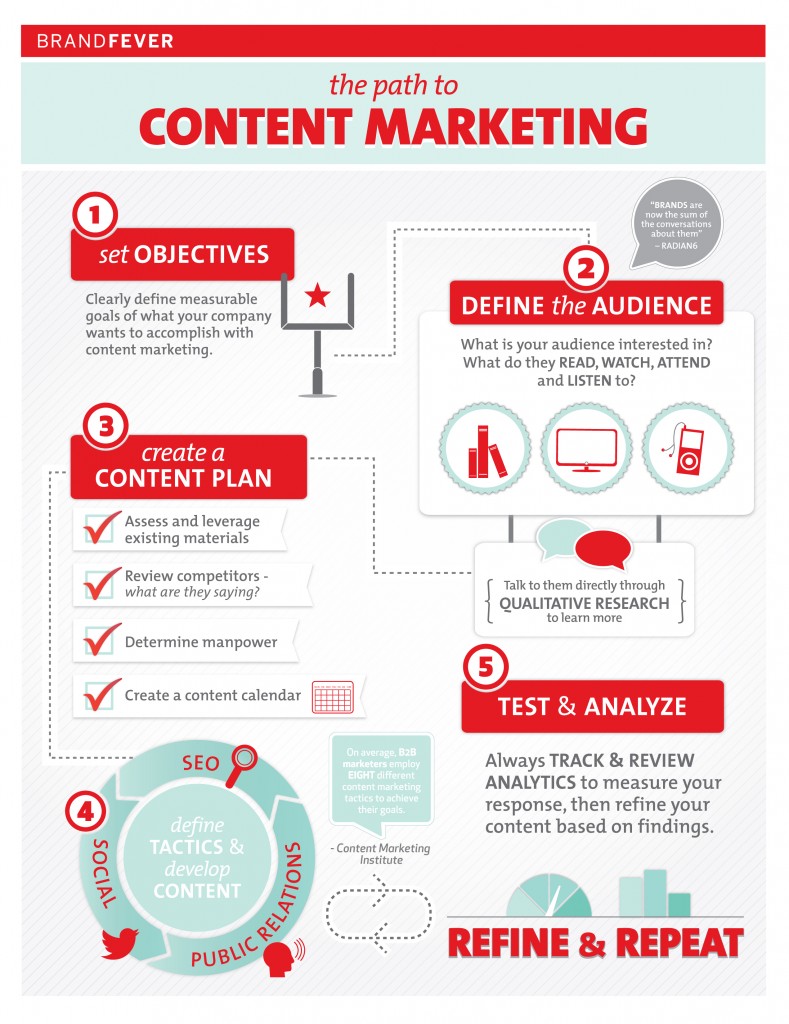The evolution of content strategy as a marketing tool is fascinating. Years ago, creating a 400-word article with keyword stuffing guaranteed some traffic on search engines. Today, this strategy is not only ineffective but penalized by Google. According to a study by Moz, 93% of content created daily receives zero traffic from search engines. To be among the 10% that receive traffic, creating a content strategy to develop content is a necessity.
Creating a content strategy goes beyond writing an article. You must appreciate and understand the end from the beginning implying that you must establish the expected response from your target audience before you develop content. Content creation is easy, but creating content that inspires a call to action is the hard part.
How do you create a content strategy?
Start by appreciating a content strategy, which is simply a plan to link your expectations and results. Think of content strategy as a link between your goal and action, what you do on a daily, weekly, or monthly basis to achieve your marketing goals.
Set your vision, mission goals, and KPIs
Vision is a statement that says where you want to go. When Nike promised to bring inspiration and innovation to every athlete, that vision became the building block on Nike to date. Thus, set a vision for your content strategy, which answers the question of where you want to go?
Mission defines what to do to get to where you want to go. Creating content is part of the mission, but remember, your mission should go beyond creating content. The mission is to create content that:
• Builds awareness
• Drives traffic
• Inspires a call-to-action
• Inspires customer loyalty
• Educates customers
• Ensures customer retention
• Enhance customer engagement
So, how do you achieve all these and more in a single 600-word article? The answer lies in your KPIs, or key performance indicators. Every article, video, meme, or blog post should meet the requirements of your KPI. Your KPI should measure the performance of your content across all platforms. If your KPIs are awareness, loyalty, education, and retention, then all your content should attain these metrics, as shown below:
Do you know your target audience?
Understanding your target creates a clear pathway in your digital content strategy. Understand who you are writing for; demographics like age, sex, income level, geographical location, lifestyle, and past behavior like the sites they visit and social media trends. Remember, you are not creating the content for yourself, and are in constant competition to attract the attention of an audience with a short concentration span. Use tools like Google Analytics to determine the existing g content deriving great results and understand the metrics behind such content.
Understand your audience’s journey and customize the content to each stage of the audience. A single blog post cannot meet the needs of beginners, intermediaries, and experts. To bridge this gap, create an article for beginners and include a link in the blog post to direct them. This way, experts can scan through the information without being burdened by stuff they already know.
Understand your niche and focus on it
Are you in real estate, healthcare, shopping, SEO, or finance? Understand your niche and focus on creating highly targeted content. Focusing on a single niche makes you credible, and an expert in your area. Thus, you can command an audience, give expert advice, inspire conversation in the sector.
There is a reason people trust Forbes for investing, financial and money matters. Because we know they are the experts in the niche. Thus, be the Forbes in your niche by knowing everything there is about the niche.
Customers trust experts, and loyalty comes from trust. Learn the trending topics in your niche, and be the first to elaborate. Demonstrate leadership, confidence, and competence in your chosen niche and make your blog/website the go-to blog to find information on the niche-specific topic.
Measure results
Your content strategy framework should include a metric for measuring results. Return on investment can tell you things:
- What you are doing right
- What needs to change
Your results should measure the metrics in your KPI, like conversions, traffic, bounce rate, and customer engagement. Using tools like Google Analytics, you can measure the results like social media sharing, ranking, and bounce rate. Use past data to identify strategies that were effective in the past and work on improving the strategy. Also, perform keyword analysis using tools like Google search console and Ahrefs. Understand your competitor’s metrics and ranking words. Adjust your content to match-up to your competitor’s words to get a piece of the action.
Listen to your customers
Remember, successful companies walk a thousand miles in their customer’s shoes. While Google and all other tools can give you figures and statistics, the only people who can give you real authentic feedback are your customers. Hence, listen to their ideas, complaints, questions, and suggestion to get ideas to create the perfect content strategy.
One KPI of content strategy is to encourage customer engagement; thus if you do your strategy properly, you can use the feedback as a framework for creating content.
To recap, creating a content strategy is the only way to get a good return on investment. This guideline can be a great starting point, but expect some hiccups in the beginning. The best way is to use trial and error until you get the perfect strategy that works for your audience.




